On our last full day underwater -- Day 31 of Mission 31 -- we dove in the morning and then started decompression. I wrote about my last hot chocolate by the magnificent Aquarius viewport in this blog post, and referred to Brain Helmuth's excellent article on The Science (and Math) of Decompression and fellow aquanaut Adam Zenone's post on his Aquarius decompression experience during the first half of the mission.
Decompression: 18 Hours
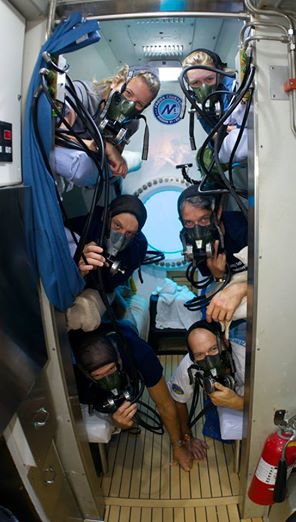 Oxygen administration during deco.
Oxygen administration during deco. During decompression, an 18 hour process in total, they seal the door on the Aquarius wet porch; it has a nice greasy O-ring seal that I've accidentally brushed up against a few times throughout the mission. We started decompression by breathing pure oxygen for three sets of 20 minutes, with 5 minuets rest in between. During this time, we were in our bunks and watched Jacques Cousteau's World Without Sun, a documentary film about Jacques's undersea mission Conshelf II attempting to live and work on the seafloor that inspired Mission 31. The New York Times gave the film this great review in 1964! Fabien said in the press conference afterward that it was interesting to notice similarities between the way they did things on Conshelf II and the way we did some things on this mission. But he also noted that we had access to technology that Jacques could only dream about fifty years ago. While we lay there with the masks, dive medical technician Jason joined us in the Aquarius habitat to administer the oxygen. He'd be the only one not breathing O2 as a safety precaution in case all of us on the oxygen suffered complications.
| During decompression, the technicians seal the o-ring along the door wet porch, turing the main living area of Aquarius into a decompression chamber. This way the internal pressure in Aquarius can lower, without affecting the water level in the wet porch. | Fabien left this sign by the fridge, visible on the Live Cam. The image in the upper right is from Conshelf II, Jacques Cousteau's mission that inspired Mission 31. As a tribute, we watched the film World Without Sun during our decompression. |
During the second stage of our decompression, the inside pressure of Aquarius lowered from 2.5 atmospheres to 1 atmosphere, over the course of these 14 hours. I'm slightly embarrassed to say that I slept almost through the entire process. I was exhausted and I guess my body just needed 12 hours of sleep... Anyhow, apparently everyone else had dinner as usual and watched the fish out the window. There was no shark-grouper-barracuda feeding frenzy happening outside the window, unlike during the first decompression.
| While pressure decreased, the depth reading in Aquarius lowered. At the time of this picture (right after I woke up...) the pressure in the habitat equaled the water pressure 1.3ft deep. | We reached surface pressure! At this point, the depth reading in Aquarius read 0.0 ft. Note, Aquarius didn't move! It stays bolted to the seafloor. Only the inside air pressure changed. |
SPLASH UP, Day 32 (because of decompression)
Time flew by during our last morning in the habitat. We all felt rushed. I woke up at 7 AM, and immediately set up the color Edgertronic camera, looking at fish feeding outside the port window. I figured it was my last opportunity to do so! I had to pack up within a half hour though, to help clean and prepare the habitat for re-compression. Shortly after we reached regular atmospheric pressure, the technicians then re-pressurized the habitat to 2.5 atmospheres over a half hour or so. Since we were no longer saturated, this was now like a surface dive for us, and so no longer being saturated, our bottom time was limited. Tom Potts and Carter from the Navy greeted us at the wet porch to escort us to the surface. We pulled on our SCUBA gear in the water and ascended to the surface. My brain didn't really have time to process. With nine divers following one ascent line, I was mostly focused on trying not to kick anyone in the head with my fins. Before I knew it, my head popped above the water. The first thing I noticed was a quad-copter flying above, filming areal shots of the splash up. That's it! We're surface dwellers again!
| Leaving the habitat to re-surface. Images from mission control monitors. It was cloudy and turned rainy the morning we resurfaced. Perhaps fitting? Credit M31 topside | We arrived! Safe and sound. Why aren't we wearing Mission 31 wetsuits? As an extra safety precaution they like not to have divers return from saturation in wetsuits, in case there are any complications. Left to right: Aquanauts Otter, Matt, me, Liz, Fabien, and Ryan. Credit Marc Ostrick Our topside team and various media greeted us at the dock. Credit Amy Summers |
WELCOME BACK! BUT FIRST, a PRESS CONFERENCE
| We regrouped at reef base for the final Mission 31 press conference. There should be a video of the press conference live later. Three or four dozen people were there, packed into the lobby. The vibe was very positive. Mission 31 had collected years worth of research data in 31 days, hopes to generate ten scientific papers, and reached millions of people on six continents to talk about our oceans. There was also some discussion about what a "Mission 32" would look like. (I will find the link to the press conference and add it here.) |
Then, the Splash Up Party
WHAT's NEXT?
Right now, I'm in the Miami airport headed back to Boston for 4th of July weekend with friends (celebrating by the water!). Then, mid-next week I go to Aberdeen, Scotland, to start my internship in a company specializing in deep sea sonar imaging. I will attend the OCEANS'14 conference in mid-September, and then I start my PhD studies at Oxford University in the fall! By early 2015, you may see a documentary film in IMAX theaters about Mission 31. I feel like our work with Mission 31 in raising ocean awareness and processing the immense amount of scientific data we gathered has just begun, and that's exciting.
Throwback Thursday, Mission 31: I remember My Undersea Graduation (Mission Day 6).
Throwback Thursday, Mission 31: I remember My Undersea Graduation (Mission Day 6).
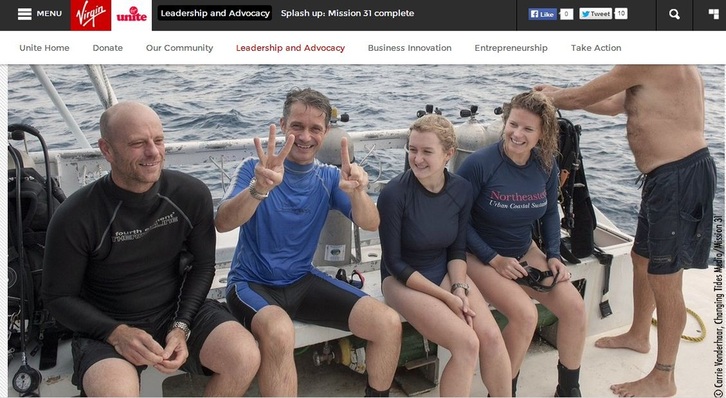
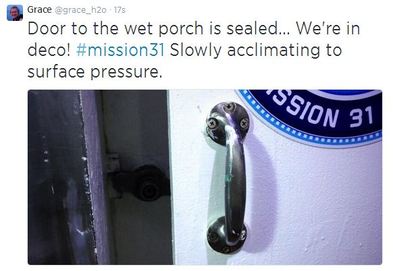
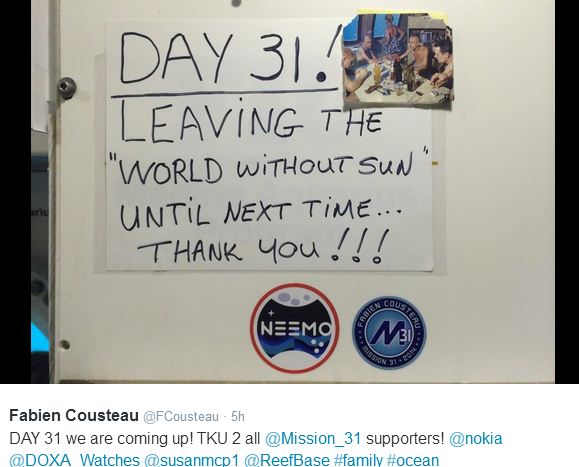
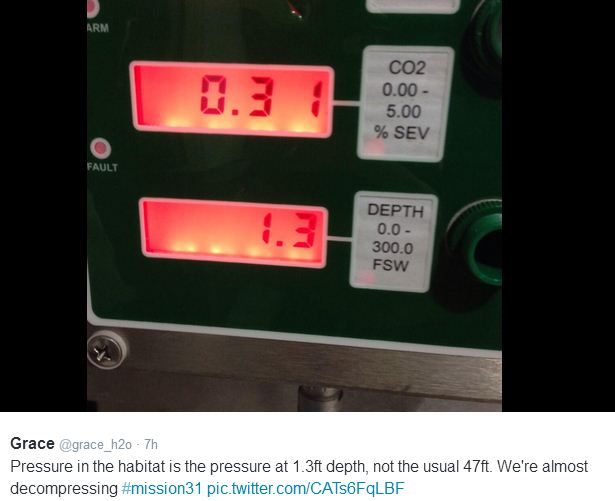

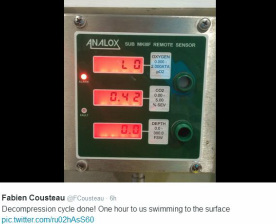
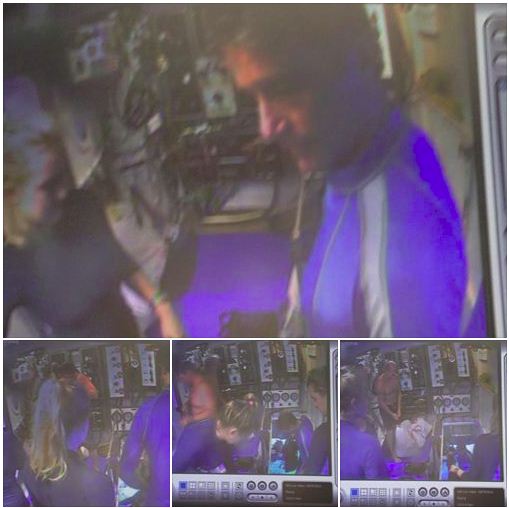
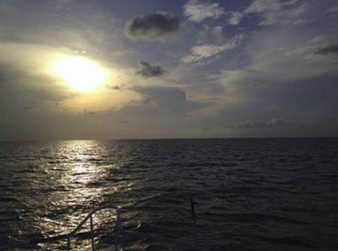
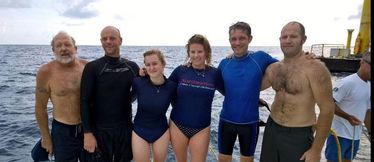
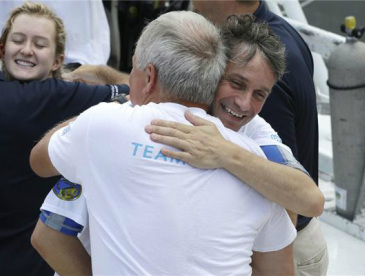
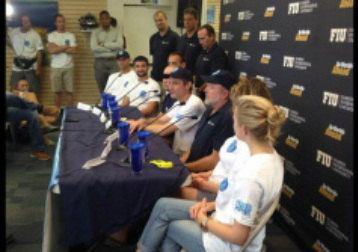
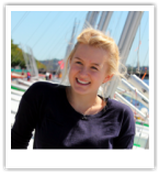
 RSS Feed
RSS Feed
